Where are we at?
Q: Are all of the released birds breeding now?

2013 and 2014 saw the first tentative breeding attempts by pairs on the Somerset Levels and also at the WWT Slimbridge Reserve in Gloucestershire. These early attempts did not result in any chicks fledging.
2015 was the first year the project produced fledged young - the first int he South West of England for over 400 yrs! 16 pairs formed and held territories, many in the Somerset Levels and Moors, but others in South Wales, Wiltshire, Gloucestershire, Oxfordshire and East Somerset. Nine of these pairs made breeding attempts with four of these going on to hatch and raise chicks. Three of these four pairs went on to raise a chick or chicks to fledging: Alexander, a 2012 male, & Swampy, a 2011 female on private land in Somerset (raising twins); Minnie, a 2010 male & Wendy, a 2010 female, on the WWT Reserve at Slimbridge (raising a single); and Midnight, a 2012 male & Gemma, a 2010 female on private land in Wiltshire. These six birds were the first to successfully raise young to fledging.
2016 saw 15 of 23 territorial pairs make breeding attempts, with 2 pairs successfully raising 3 chicks to fledge. The Somerset pair Alexander & Swampy were successful again in Somerset with a single chick raised (and ringed Red White Green - nick-named Wurzelina) and Lofty, a 2011 male, & Gibble, a 2012 female, raised a pair of twins to fledging on the Gwent Levels in Wales. This was the first breding in Wales for over 400 yrs...
2017 saw 10 of 19 territorial pairs make breeding attempts, successfully raising a further 4 chicks to fledge. The drop in number of both territorial and nesting pairs in 2017 is thought to be due to the exceptionally dry spring that meant food was hard to come by, and suitable wet nesting sites were scarce. Successful pairs were Legend, a 2011 male & Elle, a 2011 female (raising a single); Timmy, a 2011 male & Michaela, a 2010 female (raising twins - one of which was caught and ringed Red Black Green -nicknamed Eugene) and Manfred, a 2013 male, and Diamond, a 2014 female (raising a single - which was caught and ringed Red Yellow Green and nicknamed ManDi). All these 4 chicks fledged from the RSPB West Sedgemoor Nature Reserve in Somerset.
2018 saw further increases in hatching and fledging with 7 chicks fledged in total from 22 nesting pairs. Birds bred in Somerset, Gloucestershire, Oxfordshire, Cambridgeshire and South Wales at 2 separate locations. Successful pairs were: Legend (2011) & Elle (2011) raising 1 chick; Gerald (2011) & Flash (2011) raising 1 chick; Jasper (2012) & Viridor (2013) raising 1 chick which was ringed White Red Green; Wiz (2012) and Pippa (2011); Bart (2010) & Ruby (2010) raising 2 chicks; and Oakie (2013) and Sherbert (2014) raising 1 chick.
The breeding fortunes for the last few years are tabulated below. You can read more in the annual reports, and on the individual crane pages.
|
|
2013 |
2014 |
2015 |
2016 |
2017 |
2018 |
Total |
|
No. of pairs observed during Spring |
1 |
5 |
16 |
23 |
24 |
24 |
- |
|
No. of pairs holding a territory |
1 |
5 |
16 |
22 |
19 |
22 |
- |
|
No. pairs making confirmed/probable nesting attempts |
1 |
2 |
9 |
15 |
10 |
22 |
- |
|
% of pairs that made nesting attempts |
100% |
40% |
56% |
65% |
41% |
92% |
- |
|
Confirmed number of nesting attempts (includes pairs making 2 or more attempts) |
2 |
4 |
11 |
25 |
14 |
33 |
56 |
|
No. pairs reaching hatch stage |
1 |
1 |
4 |
5 |
7 |
17 |
35 |
|
% of nesting attempts reaching hatch stage |
100% |
50% |
44% |
33% |
70% |
77% |
- |
|
No. of hatched chicks |
1 |
2 |
6 -7 |
7 |
11 |
20 |
27-28 |
|
No. of hatched chicks per nesting pair |
1 |
1 |
0.72 |
0.46 |
1.10 |
0.91 |
- |
|
No. of fledged chicks |
0 |
0 |
4 |
3 |
4 |
7 |
18 |
|
No. of fledged chicks per nesting pair |
0 |
0 |
0.44 |
0.20 |
0.40 |
0.32 |
- |
|
No. of fledged chicks per territorial pair |
0 |
0 |
0.25 |
0.14 |
0.21 |
0.32 |
- |
The project targets is to establish 20 regularly breeding pairs in the South West by 2025 with a five year averaged annual productivity of 0.40 fledged chicks per territorial pair.
Q: How many eggs were collected for the reintroduction?

A. The project aimed to collect 24 eggs each year for five years. Over the five years 2010-2104 we have transported 121 eggs back to the UK, 114 of which hatched. From these 115 chicks - 93 have been reared to release, with 3 being held back in captivity for welfare reasons.
Q: Has this had any effect on the German population?

In other words the birds re-lay once we have removed the eggs, and these new eggs go on to hatch and fledge with the same % of success as other pairs in the same study area where we don’t take the eggs.
Q: How many birds did you release on the Levels and Moors?
A: We have released 93 birds in total. 21 in 2010, 17 in 2011, 19 in 2012, 19 in 2013, and 17 in 2014 - one of which was taken back into captivity to leave 92.

A: 58 of the released birds are currently known to be alive (fig at end Dec 2018). This represents a 62% survival rate to date. T he project had a target of 60% survival to adulthood and this was exceeded with each cohort. This 60% survival rate is usual for birds across their range in continental Europe. The released birds have done much better than we thought they might, particularly seeing as they have to make it through tricky periods such as their first moult, where they become flightless for a period of around five weeks – see below.
Q: What happened to those that didn’t survive and have you any missing birds?
A: Two birds of the first cohort died during their first Autumn. A bird known as Jack flew into powerlines and was killed, and a bird known as Howard disappeared in the autumn, and its remains were found much later, with the cause of death not clear. A third bird, Dennis, from the 2010 cohort was taken back into captivity for his own welfare and is currently within the Pensthorpe Conservation Trust collection. The following autumn, on the release of the 2011 cohort a bird known as Mildred flew off, was seen in Kent and then disappeared. She has not been seen since and we don’t know if she is alive or dead. Another bird from the 2011 cohort, Gizmo, became ill over his first winter, was alone and isolated from the group, and was taken by a fox in the night. In 2012 a bird known as D2 sustained a fairly severe leg injury, but proved uncatchable for treatment. It became a bit of a loner, and was probably pretty under the weather, when it was finally taken by a fox in March 2013. Trinny from the 2011 cohort went missing in April 2013 - but in the company of an unringed cranes - so perhaps she went abroad. No sightings have been reported mind you. Vince from the 2010 cohort went missing in May 2013 around the time of the start of moult. Her whereabouts or life status are unknown. Clarence also from the 2010 cohort started behaving oddly in spring 2013, hanging around on his own a lot - which usually indicates that a bird is ill. We saw him go into moult in June, however, and are pretty confident he was seen in flight following moult in July - but he has subsequently disappeared - and has not been seen again. The radio tag and a few scraps of feathers and bones of Jess from the 2012 cohort were found in early September 2013 - her cause of death is unknown. Jess had always been quite a weak bird, and a poor flier - but had seemd to be been doing OK post release. The remains of White Green Yellow, one of the 2013 cohort were found out on the moors in early November following release. His cause of death is unknown, but his remains had been scavanged by a predator, most likely a fox. Charlie - one of the 2011 cohort, went missing in late October 2013, and has not been seen to date and Frieden - one of the 2013 release cohort disappeared during the winter of 2013/14 and has also not been seen again. A report of Frieden's ring combination has been received from Germany, however, but was not confirmed. Pepper - one of the 2011 Cohort was last seen in December 2013 - cause of disappearance unknown. Sven - a 2013 male had a collision with (we think) a powerline in February 2014, and was found, recovered and taken for treatment, but had to be put-down on account of a severely broken wing. Misty Moor, also from the 2013 cohort was last seen in May 2014 and his whereabouts are unknown. Two of the 2014 cohort Humbug and Yellow Red Black were found dead in early November 2014. Cause of death of these two were likely to be linked to leg injuries that they sustained shortly before being found dead, although the cause of the initial injury, and cause of death is unknown. Mennis - a 2010 male went missing in Nov 2014 - reason unknown; Gilbert - another 2010 male picked up a severe leg injury, was seen to deteriorate in condition and then went missing in January 2015. Minnie another one of the first (2010) cohort one of the first males to successfully fledge a chick, went missing in the autumn of 2015, and the 2010 bird Chris the first female to hatch eggs in 2014, was found emaciated and ill at WWT Slimbridge in February 2016 and sadly, had to be put down. Stanley a fine and feisty 2013 male unfortuately collided with a fence and was killed in the Spring of 2016, and later that summer, 2 more 2013 birds - a female called Buttercup and a male called Willow were both lost at or around moult. In September 2016 the body of the project's most productive female - Swampy was found, and post mortem discovered that she had been shot - the only bird known to have been lost through this cause. Despite a reward being offered and a significant police investigation, no-one was caught or charged with this wildlife crime. 2017 saw Midnight, Billy, Dillon and Stowford go missing - and without these birds being seen again they are presumed dead. 2018 saw Lofty not return to Somerset after making a breeding attempt in Wales; Skye and Cosmo went missing and are now presumed dead; Cotton and Bart both died due to disease; and Wally became entangled in his backpack harness and sadly died.
Q: So with many of the birds now over 3 years old... they must have had their first moult?
A: Yes – most of birds appear to be going into their first full wing-feather moult in their third or fourth year. They tend to find a very quiet area out on the moors where they are undisturbed and can roost in safety. Each year the moult period is a tense time for us all as - and it seems that some birds are lost most years around this time - it is clearly a very stressful and danger-fraught period in their lives.
Q: Are all the birds in Somerset still?

Q: Have they mixed with other resident cranes from the east and north of the country?

Q: What about the habitat aims of the project – how is all that going?

Last updated - December 2018

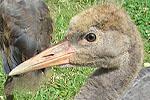 Red White Yellow
Red White Yellow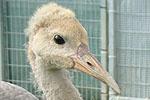 Red Blue Yellow
Red Blue Yellow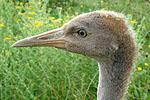 Red Green Yellow
Red Green Yellow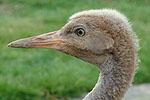 Red Black Yellow
Red Black Yellow White Red Yellow
White Red Yellow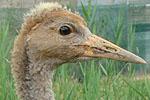 White Blue Yellow
White Blue Yellow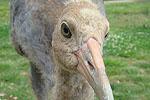 White Green Yellow
White Green Yellow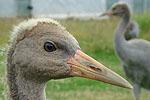 White Green Yellow
White Green Yellow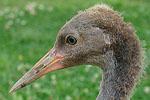 Blue White Yellow
Blue White Yellow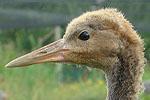 Blue Green Yellow
Blue Green Yellow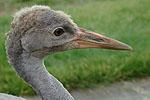 Blue Black Yellow
Blue Black Yellow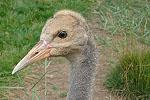 Yellow Red Yellow
Yellow Red Yellow Yellow White Yellow
Yellow White Yellow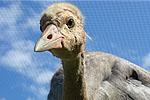 Sven
Sven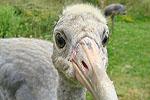 Yellow Green Yellow
Yellow Green Yellow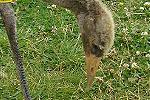 Yellow Black Yellow
Yellow Black Yellow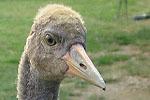 Green Red Yellow
Green Red Yellow Green White Yellow
Green White Yellow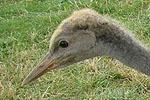 Green Black Yellow
Green Black Yellow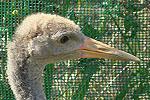 Frieden
Frieden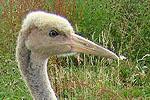 Black White Yellow
Black White Yellow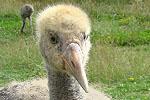 Black Green Yellow
Black Green Yellow